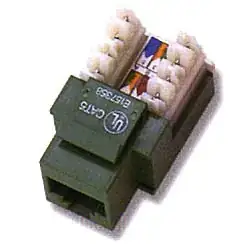I just got hired into a new company where no IT has been before. My first task was to identify the possible problems. This is what I first saw, when checking on the cables connected to the switch, I noticed a different color coding in this order:
White-green Green White-orange Orange White-blue Blue White-brown Brown
This is the cable connecting to the switch. Haven't checked the color coding yet on the network outlet.
Is the color coding very wrong and should have them replaced for everything?
Thank you everyone for the prompt reply.
I have checked the color coding from the RJ-45 directly connected to the switch. I have yet to check the punch down configuration.
There is no patch panel yet. The connection is basically like this: Workstation > Outlet > Switch.
By the way, cables used are Cat5-e. The company is a 3d animation company and large files are required to be transferred on the file server. We do encounter slow file transfer a lot.
The way I'm seeing it, the color coding used was not a T568a or T568b standard. It is rather color coding scheme somehow of its own. Does this also explain the slow file transfer?
Another thing I would like to consult with is the network speed. The computers and switch (D-link DGS 1024-D) are both capable of Gigabit connection. Yet only the two file servers are getting Gigabit connections and the rest of the workstations are 100Mbps (others are even 10Mbps).
